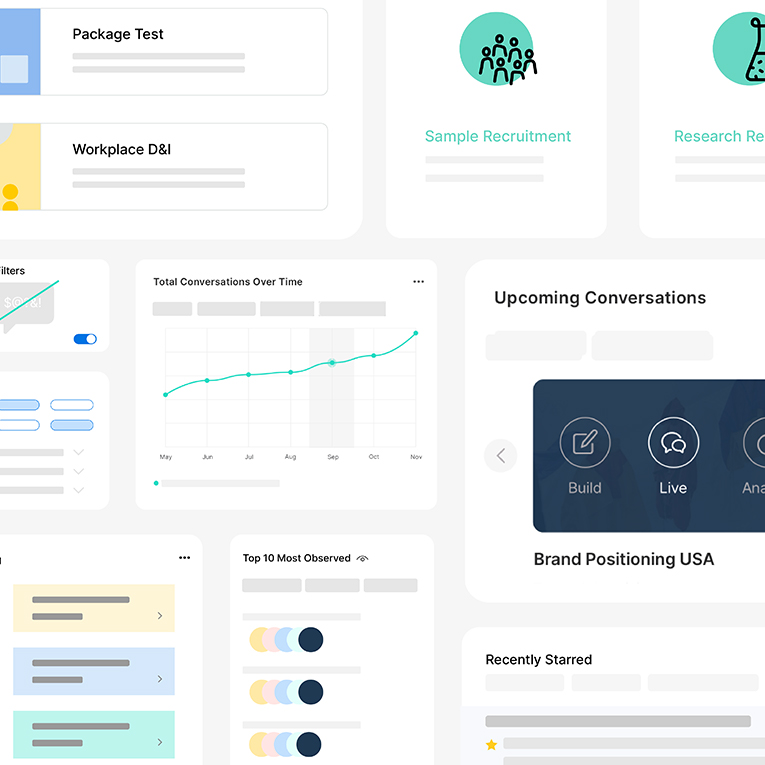.webp)
Trends
How to Calculate Your Sample Size Using a Sample Size Formula

.png)

.png)
Read More

.png)
.png)
.png)
Maria Noesi
November 25, 2021
Remesher
.webp)
Trends
How to Calculate Your Sample Size Using a Sample Size Formula

.png)

.png)
Read More

.png)
.png)
.png)
November 25, 2021
Remesher
.webp)
Trends
How to Calculate Your Sample Size Using a Sample Size Formula

.png)

.png)
Read More

.png)
.png)
.png)
November 25, 2021
Remesher
.webp)
Trends
How to Calculate Your Sample Size Using a Sample Size Formula

.png)

.png)
Read More

.png)
.png)
.png)
November 25, 2021
Remesher
.webp)
Trends
How to Calculate Your Sample Size Using a Sample Size Formula

.png)

.png)
Read More

.png)
.png)
.png)
November 25, 2021
Remesher
.webp)
Trends
How to Calculate Your Sample Size Using a Sample Size Formula

.png)

.png)
Read More

.png)
.png)
.png)
November 25, 2021
Remesher
9 Experiential Retail Trends (and Case Studies)
Experiential retail is a series of practices that aim to improve the in-store experience for shoppers through emerging trends.

Experiential retail is a series of practices that aim to improve the in-store experience for shoppers. Emerging trends, like the use of immersive realities, and other customer-centric shopping experience strategies can help brands further optimize the purchasing experience for their customers.
Physical retail as we know it is dying. Last year alone, more than 3,800 physical stores across the country closed, including some physical retail spaces from major brands like Macy’s and Best Buy. These traditional brick-and-mortar powerhouses seem to be getting edged out by eCommerce.
Read: eCommerce & Experience Shopping Trends (Report)
In response, many brands (like Unilever and CoverGirl) have turned to experiential retail strategies to revitalize the customer experience in physical stores. These strategies focus less on sales, and more on creating engaging and unique experiences for the shopper - a key to brand loyalty and customer retention.
Such initiatives can include:
- Exclusive in-store services and events
- Pop-up stores and experiences
- Showcasing local culture and design

Experiential Retail Examples and Trends
Beyond increasing customer purchases, experiential retail strategies can also bring about other benefits to a company and its brand. And, experiential retail is not exclusive to the luxury retail industry. Check out a few examples of our favorite brand experiences below.
Read: The Best & Worst of Social Corporate Responsibility Campaigns

Creating In-Store Maps (Target)
Fashion and apparel brands usually come to mind when we think about experiential retail. But, even big-box (large chain stores) and grocery stores are investing in ways to enhance the shopper experience.
Brands with large and complex storefronts are turning to wayfinding technologies like indoor mapping and tracking to make store navigation easier. This technology also creates the option for retailers to offer new products and promotional information directly to shoppers.
An example of this is Target’s in-store beacon systems, which use Bluetooth to help customers find items they want to purchase. Target also uses its app to provide information about in-store inventory levels and any existing store promotions.

Meet Your Customers Face-to-Face (CoverGirl)
Forget flagship stores. Most makeup suppliers have never had a single brick-and-mortar storefront. Instead, this type of consumer packaged goods (CPG) company traditionally relied on department stores to sell products.
Recently, CoverGirl joined the growing number of companies who have optioned a direct-to-consumer strategy. By opening up a single physical store, CoverGirl was able to re-introduce their brand to the public. At the store, customers can use augmented reality stations that create videos and GIFs for social-sharing. Customers can also create personalized makeup bags or lipstick packaging at special booths.

Exclusive Events for Customers (Unilever)
When St. Ives (Unilever’s up-scale lotion and bath product division) wanted to attract more traffic to the physical store, the company decided to put on a concert series called “Mixing Bar.” The series was so successful during its original 2017 launch, that St. Ives has continued to put it on each year.
Unilver gave the first 60 shoppers in line an exclusive meet-and-greet with the featured performer, which added a sense of urgency and exclusivity to the event - and to the consumer decision-making process.

Interactive Entertainment (Kraft)
And sometimes, everyone just wants to have a little fun.
Interactive in-store activities incentivize customers to spend more time in stores. Through novel applications of technologies like motion tracking and virtual reality, retailers are able to create fun activities for shoppers.
Kraft, for example, created a unique store experience by installing an interactive floor in grocery stores equipped with motion tracking. This allowed customers (and their kids) to kick and jump on floating pieces of macaroni and cheese noodles.
For Kraft, this meant customers would linger for a longer period of time in the pasta aisle - or even in front of their own product offering on the shelf.

Reinforcing Brand Identity (Vans)
The type of experiences and environment that companies create through their physical stores can help influence how customers perceive that brand. One great example of this is the House of Vans in London.
Vans converted several underground tunnels in London into 30,000 square feet of skateparks and art galleries. They even included a ramp and street course for customers to use. The store drew a huge amount of publicity. The initiative also helped reinforce Vans as the premium retail store for the skating community.

User-Generated Social Media Presence (L’Occitane)
Experiential retail initiatives can also be an effective way for brands to build their social media presence. Creating experiences that customers feel excited about sharing can help brands quickly accumulate user-generated social content.
L’Occitane is an expert in this strategy. The company provides iconic art installations and Instagrammable photo spots within the store. Then, customers can use the displays to create social media content that trends - all while taking pressure off of the corporate social media team.

Integrating Digital and Physical Experiences (Nike)
Customers often use multiple channels while shopping and have increasingly come to expect seamless omnichannel shopping experiences. These help them easily transition between different brand platforms.
Within the world of experiential retail, the omnichannel transition occurs when customers use mobile tech to enhance their physical shopping experience - from trying on clothes in the dressing room to scanning the aisles of a physical retail store.
An example of this is Nike’s flagship store in New York City, called “House of Innovation 000.” Within the store, Nike encourages customers to use its in-house Nike App. Using the app, customers can scan a code on a mannequin, browse similar items, and request specific sizes to try on in the dressing room.

Augmented and Virtual Reality for Consumers (Zara)
Augmented and virtual reality are no longer far-off dreams, or technologies exclusive to the rich and powerful. Now, this technology is used to enhance the every-day consumer retail experience.
Mixed reality technology enables customers to better visualize products and participate in an immersive shopping experience.
An exciting example of this is in action is Zara’s augmented reality retail app. The app allows shoppers to project their preferred outfits on empty mannequins around the store, or even at home. This helps customers better visualize the products they’re interested in. And, it provides them with a kind of budget-friendly personal shopper. Similarly, augmented reality can also be used in product demos, especially when attending such events in-person is difficult.

Intelligent Personalization
A key component of exceeding customer experience is the ability to deliver a high degree of personalization. Within the world of retail, brands use various sources of shopper data, such as in-store purchasing habits, to build uniquely tailored experiences.
Farfetch takes data-driven shopper personalization to the next level with its Store Of The Future. This experiential retail outlet uses radio-frequency identification-enabled (RFID) clothing racks to understand shopper preferences. Then, it auto-populates a customer’s online wishlist.
This investment in physical retail contradicted what analysts predicted for the future of retail. Rather than a stark landscape of abandoned malls, Farfetch re-envisioned the fundamental purpose of brick-and-mortar stores. A move that could save other retailers that follow in Farfetch’s path.

The Future of Experiential Retail
As customers continue to engage with eCommerce for speed and convenience, experiential retail will become an essential strategy for brands to create memorable, unique experiences in-stores.
By finding innovative applications of new and emerging technology, retailers can continue to use brick-and-mortar locations. And, continue to see ROI that makes sense.
Want to know what your customers are talking about? Download our eBook on eCommerce and shopping trends to find out!
{{cta('65747d16-c771-4b36-9d2f-097b8e3a77e8')}}
Stay up-to date.
Stay ahead of the curve. Get it all. Or get what suits you. Our 101 material is great if you’re used to working with an agency. Are you a seasoned pro? Sign up to receive just our advanced materials.






